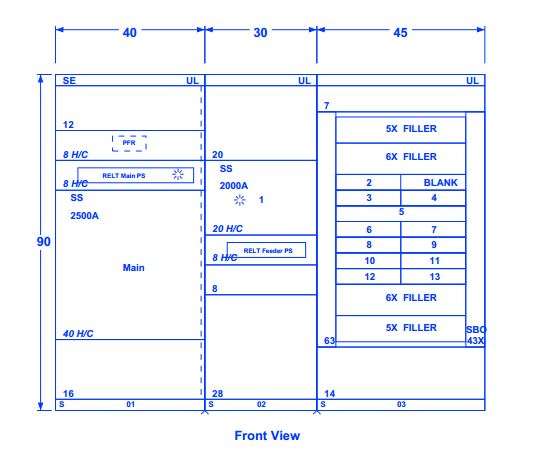When can an Arc Flash propogate from the feeder bus of a panel to the line side of the Main? What constitutes a barrier between the Main section and a feeder section of a distribution panel? I'm curious how other firms deal with these questions. It's real easy for the Arc Flash firm to just exclude the main on all panelboards, switchgears, and MCC's. However, is this the best solution for the customer?
Example, we're working on a switchboard where the main is in a separate panel from the feeder breakers. Each of the cabinets were shipped separately and bolted together during installation. Obviously there is an opening between each of the cabinets for the bus to get from the Main to the feeder cabinets. In order for the main breaker to be "included" or be considered "isolated and barriered", does this penetration need to be sealed around each of the buses with no air gaps? Here is a layout of the panelboard from the example above:

Would your firm include or exclude this main from Arc Flash calculations? Do you have a concise rule for this application?
Example, we're working on a switchboard where the main is in a separate panel from the feeder breakers. Each of the cabinets were shipped separately and bolted together during installation. Obviously there is an opening between each of the cabinets for the bus to get from the Main to the feeder cabinets. In order for the main breaker to be "included" or be considered "isolated and barriered", does this penetration need to be sealed around each of the buses with no air gaps? Here is a layout of the panelboard from the example above:

Would your firm include or exclude this main from Arc Flash calculations? Do you have a concise rule for this application?
